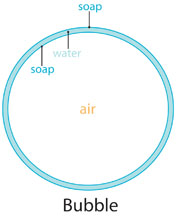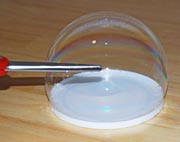1 onion, diced
2 carrots, diced
4 cloves garlic, crushed
4 C redskin potatoes, diced
8 C vegetable broth
1 can white beans
1 can diced tomatoes
1 bunch kale, chopped
Thyme, other herbs you like, salt, pepper
1. Saute the onions, carrots and garlic
2. Put in the potatoes and vegetable broth. Bring to boil.
3. Add everything else and cook until tender.
Vegetable
“noodles” are super trendy, and summer is the best time to make them
since the king of the veggie noodle — zucchini —is ubiquitous, and
inexpensive.
Go ahead and load up, because zucchini is a true powerhouse of vitamins. One cup provides over a third of your daily vitamin C, and about 10 percent of five additional vitamins and minerals, and weighs in at under 20 calories.
While “zoodles” are easily the most popular noodle, noodles can be made from a variety of vegetables.
Try other summer squashes, winter squash such as butternut, beet, carrot, sweet potato and parsnips.
Veggie noodles are easy to make, too. You can buy an inexpensive spiralizer to make quick work of cutting perfectly-shaped noodles.
Or, you can even use your vegetable peeler to shave long, thin ribbons from your vegetables; no special equipment needed.
Cooking the noodles is quick, too: usually by steaming or sauteeing briefly.
Some veggies, like summer squash, can be left completely raw if you want, and made into a cold summer noodle-like salad.
If you have been seeking the perfect recipe to dip your toe into the veggie noodle world, today’s recipe is perfect.
Sunshine Vegetable Ribbons can be made in mere minutes using only a vegetable peeler and a pan as equipment.
The flavors are bright and familiar: a little garlic, lemon, toasted pine nuts and nutty parmesan cheese.
Serve this as a pretty first course, as a side dish or even as a vegetarian main course, with a thick slice of crusty Italian bread on the side.
Once you’ve mastered the vegetable peeler noodle, get creative and explore the endless options for this new technique, swapping in vegetables for pasta in your favorite recipes.
Sunshine Vegetable Ribbons
Servings: 4
Start to finish: 15 minutes
2 large carrots, peeled
2 crookneck squashes (yellow summer squash)
2 zucchini
2 teaspoons olive oil
1 garlic clove, minced
2 tablespoons lemon juice
2 tablespoons toasted pine nuts
1 ounce parmesan cheese, shaved into shards with a vegetable peeler
Lemon zest or fresh herbs for garnish, if desired
kosher salt
Freshly ground black pepper
Use a vegetable peeler to shave long, thin ribbons (like flat noodles) of the vegetables. (You will likely have a thin core remaining of each vegetable.)
Heat olive oil over medium heat in a large saute pan.
Add the garlic and saute for one minute, until fragrant.
Add the vegetable ribbons, a pinch of salt, and stir.
Add the lemon juice and cover with a lid for just one minute (or longer if you want very soft ribbons).
Remove the lid, and remove from heat.
Serve on four plates, topped with pine nuts, parmesan cheese, black pepper and lemon zest or fresh herbs.
Nutritional information per serving: 128 calories; 66 calories from fat; 7 g fat (2 g saturated; 0 g trans fats); 6 mg cholesterol; 408 mg sodium; 13 g carbohydrate; 3 g fiber; 7 g sugar; and 6 g protein.
Go ahead and load up, because zucchini is a true powerhouse of vitamins. One cup provides over a third of your daily vitamin C, and about 10 percent of five additional vitamins and minerals, and weighs in at under 20 calories.
While “zoodles” are easily the most popular noodle, noodles can be made from a variety of vegetables.
Try other summer squashes, winter squash such as butternut, beet, carrot, sweet potato and parsnips.
Veggie noodles are easy to make, too. You can buy an inexpensive spiralizer to make quick work of cutting perfectly-shaped noodles.
Or, you can even use your vegetable peeler to shave long, thin ribbons from your vegetables; no special equipment needed.
Cooking the noodles is quick, too: usually by steaming or sauteeing briefly.
Some veggies, like summer squash, can be left completely raw if you want, and made into a cold summer noodle-like salad.
If you have been seeking the perfect recipe to dip your toe into the veggie noodle world, today’s recipe is perfect.
Sunshine Vegetable Ribbons can be made in mere minutes using only a vegetable peeler and a pan as equipment.
The flavors are bright and familiar: a little garlic, lemon, toasted pine nuts and nutty parmesan cheese.
Serve this as a pretty first course, as a side dish or even as a vegetarian main course, with a thick slice of crusty Italian bread on the side.
Once you’ve mastered the vegetable peeler noodle, get creative and explore the endless options for this new technique, swapping in vegetables for pasta in your favorite recipes.
Sunshine Vegetable Ribbons
Servings: 4
Start to finish: 15 minutes
2 large carrots, peeled
2 crookneck squashes (yellow summer squash)
2 zucchini
2 teaspoons olive oil
1 garlic clove, minced
2 tablespoons lemon juice
2 tablespoons toasted pine nuts
1 ounce parmesan cheese, shaved into shards with a vegetable peeler
Lemon zest or fresh herbs for garnish, if desired
kosher salt
Freshly ground black pepper
Use a vegetable peeler to shave long, thin ribbons (like flat noodles) of the vegetables. (You will likely have a thin core remaining of each vegetable.)
Heat olive oil over medium heat in a large saute pan.
Add the garlic and saute for one minute, until fragrant.
Add the vegetable ribbons, a pinch of salt, and stir.
Add the lemon juice and cover with a lid for just one minute (or longer if you want very soft ribbons).
Remove the lid, and remove from heat.
Serve on four plates, topped with pine nuts, parmesan cheese, black pepper and lemon zest or fresh herbs.
Nutritional information per serving: 128 calories; 66 calories from fat; 7 g fat (2 g saturated; 0 g trans fats); 6 mg cholesterol; 408 mg sodium; 13 g carbohydrate; 3 g fiber; 7 g sugar; and 6 g protein.








 You should have been able to push the scissors through the wall of the
bubble without popping it. When something wet touches a bubble, it
doesn't poke a hole in the wall of the bubble, it just slides through
and the bubble forms right around it. The bubble solution on the
scissors filled in the hole that would have been made. If you try poking
dry scissors through your bubble, you will see it pop instantly! (If it
popped when you put the wet scissors in, something was probably too
dry. Try it again and make sure anything that touches the bubble is
completely wet with bubble solution.)
You should have been able to push the scissors through the wall of the
bubble without popping it. When something wet touches a bubble, it
doesn't poke a hole in the wall of the bubble, it just slides through
and the bubble forms right around it. The bubble solution on the
scissors filled in the hole that would have been made. If you try poking
dry scissors through your bubble, you will see it pop instantly! (If it
popped when you put the wet scissors in, something was probably too
dry. Try it again and make sure anything that touches the bubble is
completely wet with bubble solution.)
